Leo’s off-the-charts confidence is at once comprehended as auditioning begins.
Last not least, the printed circuit board utilized in carrying all these electric pulses is of the 4-layer design. “Regarding the PCB, it uses a high-end and low-loss FR4 material with a custom stack-up to limit the parasitic capacitance and inductance at the switch nodes of the amplifier which have extremely fast slew rates due to the use of GaN. This allows for a very clean transition from on to off and from off to on. Note the extremely fast slew rate.”
The review system comprised the $31,000 Audio Note UK IO Ltd field-coil cartridge system with the AN-1S six-wire tonearm, mounted to a Technics SP-10 MK2A turntable, connected to a $48,000 Pass Labs Xs Phono via a $10,000 Stealth Audio Helios RCA phono cable. A pair of A.R.T. Sensor Haute Couture XLR interconnects linked the Xs Phono to the $12,000 Bricasti Design M20 preamplifier. A pair of lightweight and thin Audience AV frontRow XLR was selected to connect the preamplifier to each of the pair of the 13-pound Orchard Audio SMUP. Digital playback is carried out by a $6,300 Aurender N200 cache player and the $16,000 M21 DSD DAC via an Audience AV frontRow digital USB cable. Two pairs of Audience AV frontRow spade speaker cables in 2-meter length double-wired the Sound Lab Majestic 945PX electrostatic panels. A.R.T. Analyst and Analyst EVO power cables powered the system, except for the featherweight SMUP in which case the Cardas Clear power cables were selected. The Cardas also powered the Sound Lab panels. Also partaking in the audition were the Aurender AP20 DAC/integrated amplifier in the PRE OUT status, and the Atma-Sphere MP-1 3.3 tube preamplifier.
The Starkrimson Mono Ultra Premium has one XLR connector for analog input and employs a pair of the WBT nextgen™ copper speaker binding posts. The top panel features a laser-etched company logo of an orchard, fit for brandishing at rack top placement.
The Starkrimson possesses a highly resolving lower midrange through the top-end that brings out instrumental textures, rendering sounds of acoustic instruments seemingly more communicative and thus exceptionally enjoyable. This clarity is probably a direct result of the more sonically benign LC filter in action in its filtration of the 800 KHz switching frequency. It allows me to hear deeper into the sound of instruments onstage. This is not the same top-end hotness emphasized by some amplifiers, which throws the tonal balance out of the window.
Remarkably, this textural airiness is accompanied by competent dynamic rendition, where a collapse of performance from insufficient drive capability never took place. Driving the vast Sound Lab panels, the SMUP kept up alongside the tympani and the whole orchestra in the 1964 Decca recording of the 1886 Rimsky-Korsakov edition of the Mussorgsky “Night On Bald Mountain” with Ernest Ansermet conducting the L’Orchestre de la Suisse Romande. The energy the SMUP imparted onto the playing was palpable, pristine and propulsive. Sound-wise, few could match the 1979 Telarc digital recording with Maazel conducting the Cleveland Orchestra, recently reissued in SACD, but none could match the precision of the Ansermet reading in which the jaw dropping synchronicity of the strings section’s staccato of “ta-da-da-ta” “ta-da-da-ta” is the most disciplined and definitive to this day. The progressing, penetrating sound Ansermet directed the players to create is insurmountable despite the vintage. This is the sound of an orchestra founded by the conductor himself in 1918, its players attaining extraordinary synchronicity by the sheer will of steel of Ansermet himself. This Decca is one of the rare instances where I prefer an older recording, and the drama it conjures up by virtue of the precision playing is unmatched to this day. Most conductors led their orchestras to perform the original 1867 edition in which the staccato is played by the handful of brasses instead, masking the entire strings section with their zest and making it easier on the ear and to implement. There is only the 1886 version for me and I can’t listen to the rest of a recording of this piece if the ensemble can’t get this introductory, foreboding part right, and they have to play it twice, and they all fall apart into hot messes one way or the other. Every recording glosses this section over as if to avoid detection, and the precision and intensity of the Ansermet reading makes it a gem. Bernstein in his 1965 recording with the New York Philharmonic is the only one that comes close, somewhat. Even Claudio Abbado chose the 1867 version. Karajan avoided it completely and wisely. The Starkrimson is the first amplifier at $5k the stereo set to play it without manifesting tonal convolution in lesser designs that impacts the precision and the integrity of the playing, and it conveys the spatiality of the vintage sound most beautifully.
The Starkrimson’s treatment of high-pitch instruments such as the lone flute is another wonder at the asking price. The complete lack of artificiality in both the timbre of the instrument and its distribution of the energy is a delight to behold. Despite its diminutive stature, the monoblocks exhibited highly refined persona and composure, reflective of a superbly intelligent design at work. For something seemingly modest in ambition, the Starkrimson is a force in disguise.
In dynamic transient, the SMUP maintains its composure and tracks with the $48,000 Pass Labs pure class A XA200.8 behemoths and the $30,000 Bricasti Design M28 monoblocks, and there is arguably no sound recorded that the Starkrimson can’t reproduce at equal speed, and herein lies the concession: it gives way in tonal definition and intensity to the Pass Labs, and is not as dynamic or extended. The solid-state masterpiece sounds a magnitude fuller, its spectral extensions traverse from subterranean to stratosphere. The Starkrimson simply does not exhibit the same driving force, reach as hard down deep and as far up high.
Nonetheless, possessing a spectrum that is exceptionally open, the Orchard monoblocks’ interaction with the vast Sound Lab panels borders on the epical, as the panels are driven with seeming ease even during passages of wall shattering passages. That said, the Pass Labs pushed the Sound Lab into deeper and higher terrains with sustaining energy, a feat no other amplification has accomplished. $5,000 is no chump change, but in high-end audio, there isn’t an amplifier that I know of that perform like the Starkrimson for less. I am delighted every time I rotate them into active duty. They are my secondary reference amplification, and may well be the primary reference in many a system.
The point of differentiation is the worthiness of consideration for both the amplifier and speaker. Should one be satisfied with driving a pair of $60,000, nine-feet tall electrostatic panels with a pair of $5,000 amplifiers? The answer is a resounding yes, unless one can easily afford the XA200.8 or the M28. There’s always something better for more money. In the case of the XA, 960% more.
Review system:
Acoustic Sciences Corporation TubeTraps
Audience AV frontROW RCA cables
Audio Reference Technology Sensor Haute Couture spade speaker cables
Audio Reference Technology Analysts EVO RCA
Audio Reference Technology Analysts SE interconnects, power cables
Audio Reference Technology Super SE interconnects, power cables
Stage III Concepts Ckahron XLR interconnects
Audio Note IO Ltd field-coil cartridge system
Audio Note UK AN-1S six-wire tonearm for IO Ltd
Audio Note UK AN-9L stepped-up transformer
Pass Labs Xs Phono
Technics SP-10 MK2A turntable
Audio Desk Systeme Ultrasonic Vinyl Cleaner
Aurender N200 high-performance digital output network transport
Aurender AP20 DAC/integrated amplifier
Bricasti Design M21 DSD dual-mono DAC
Atma-Sphere MP-1 3.3 tube balanced preamplification system
Bricasti Design M20 Preamplifier
Pass Laboratories XA200.8 pure class A monoblocks
Bricasti Design M28 class A/AB monoblocks
Atma-Sphere Class D GaNFET monoblocks
Sound Lab Majestic 945 electrostatic panels
- ← Previous page
- (Page 2 of 2)
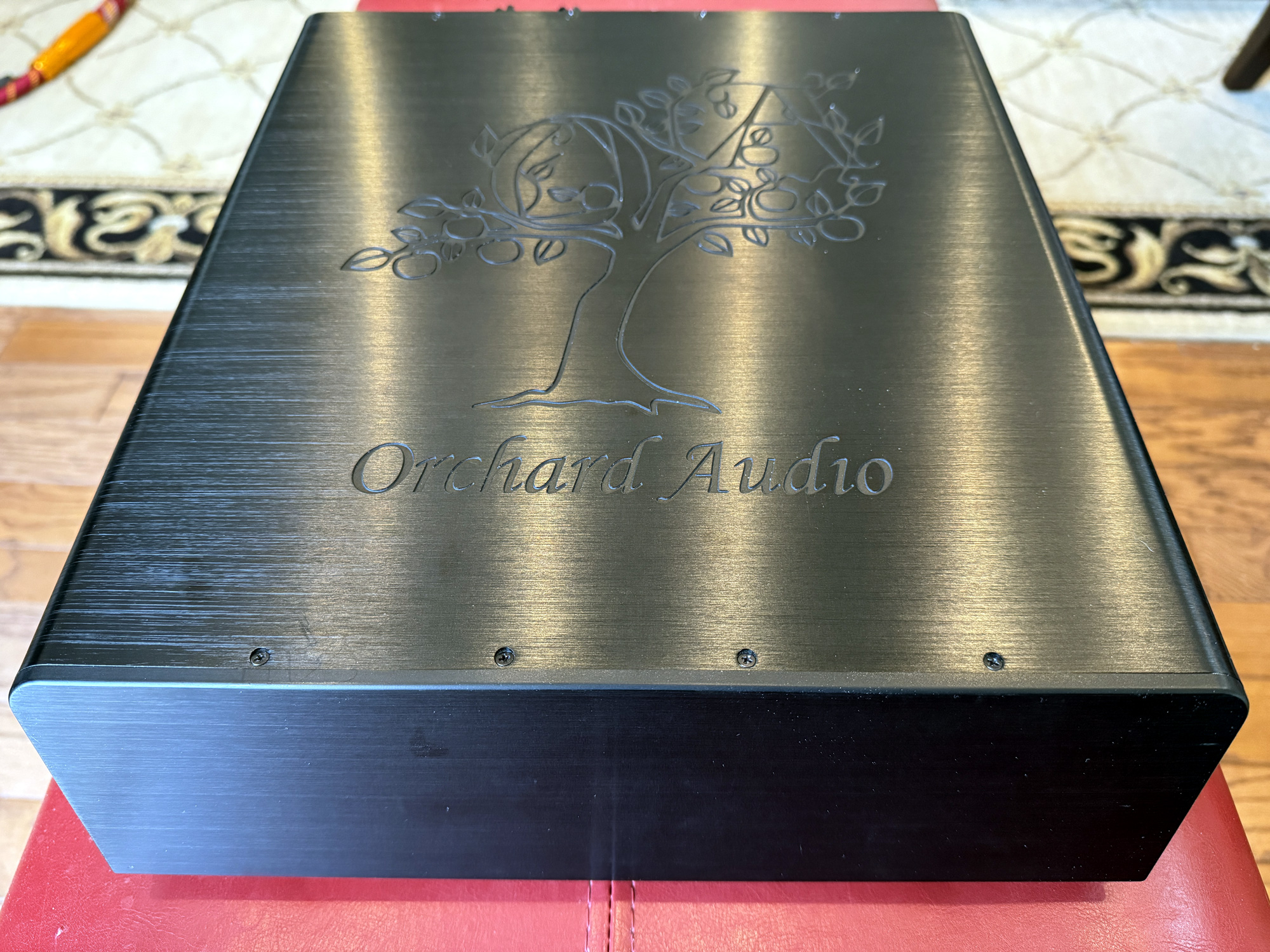
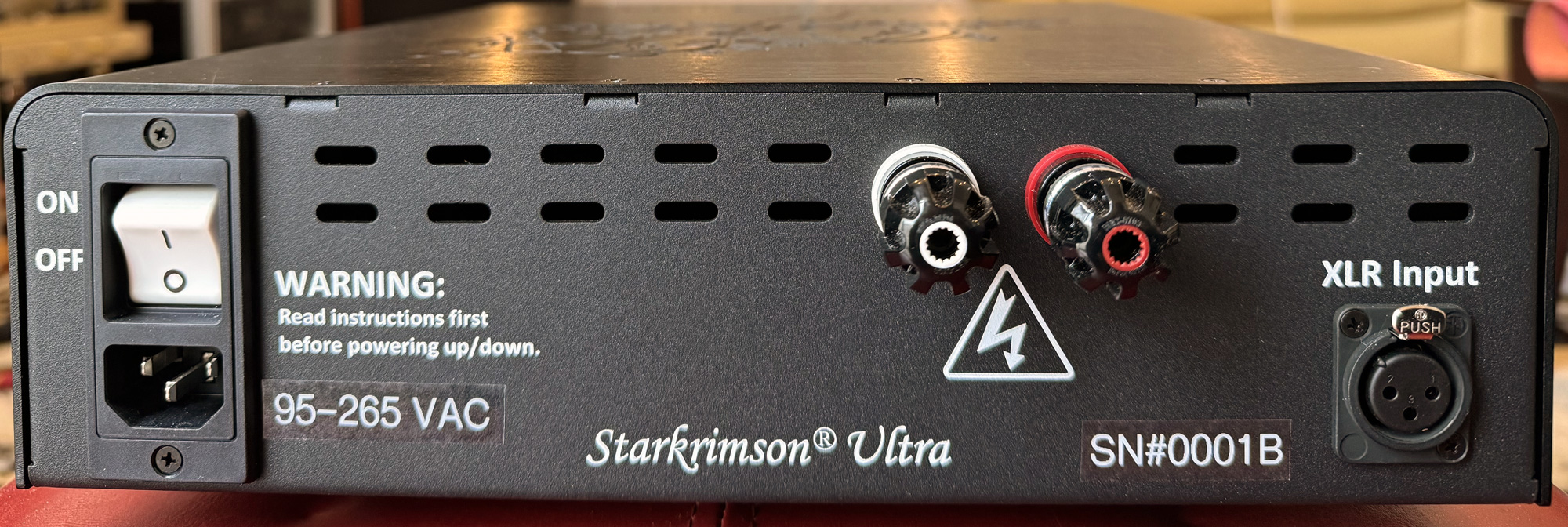
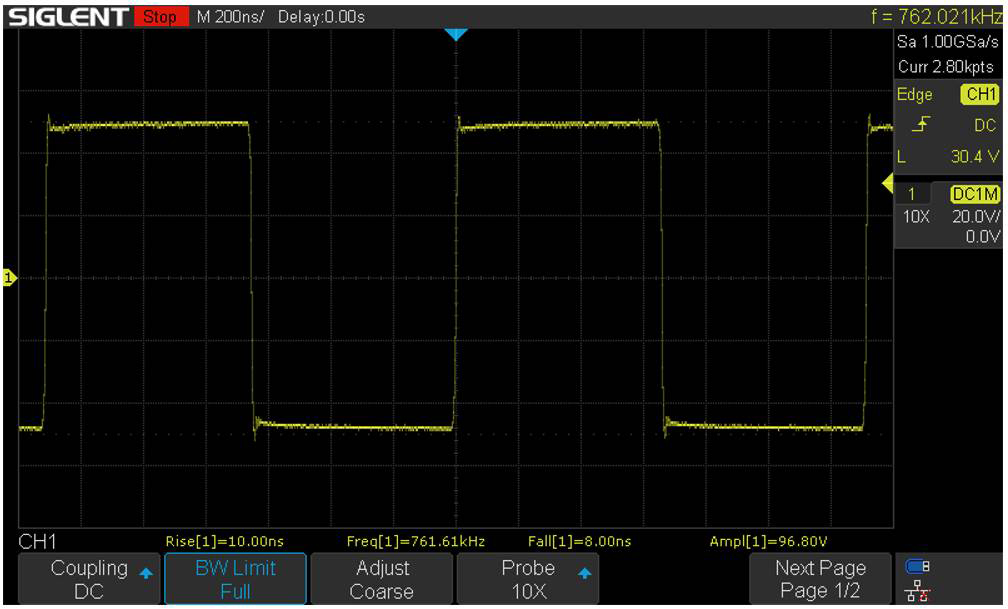
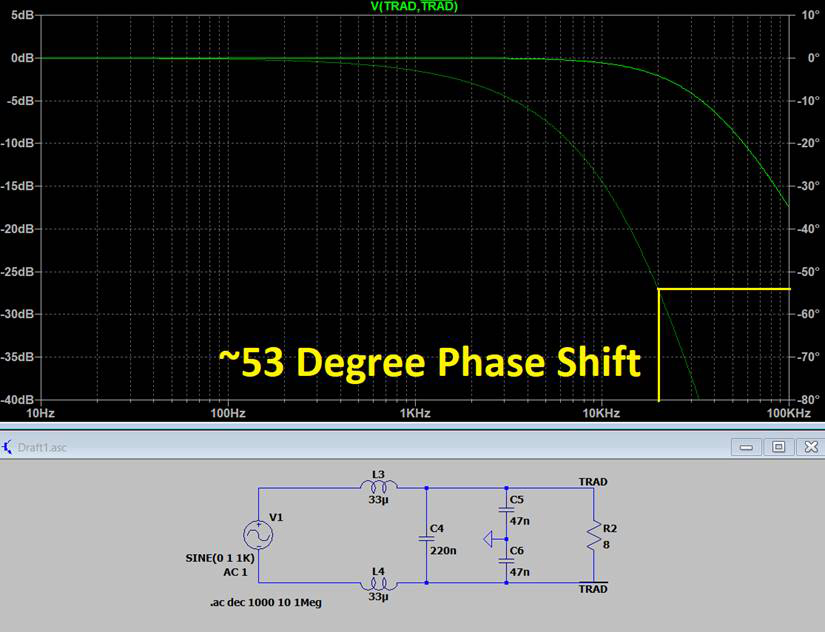
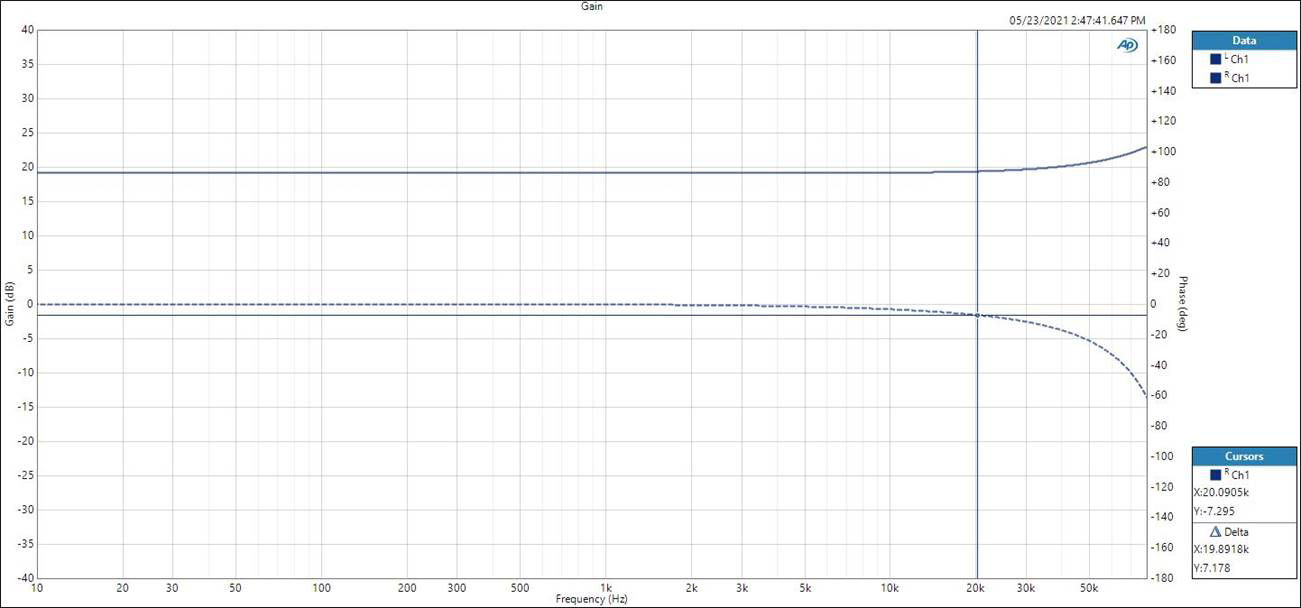
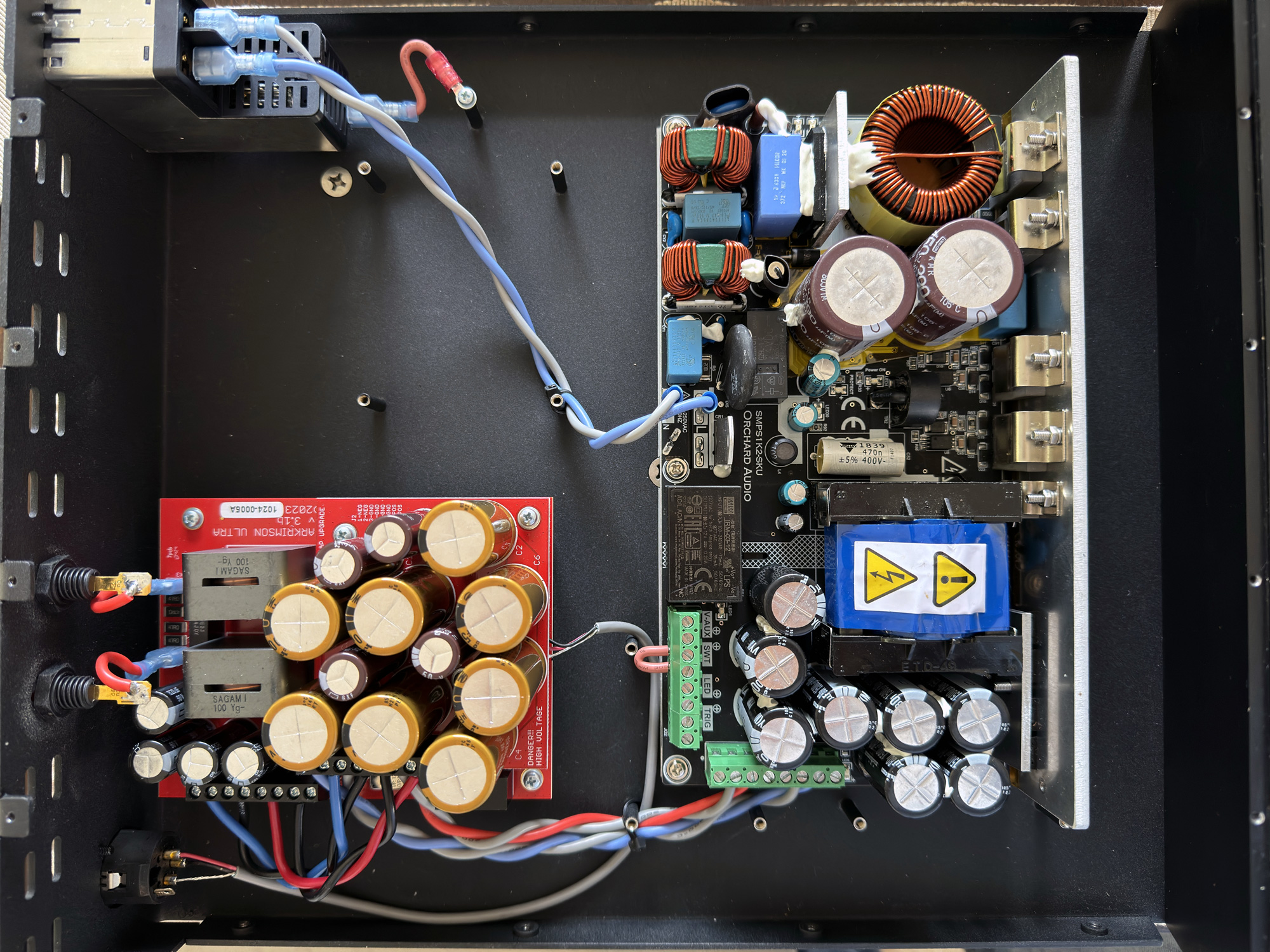
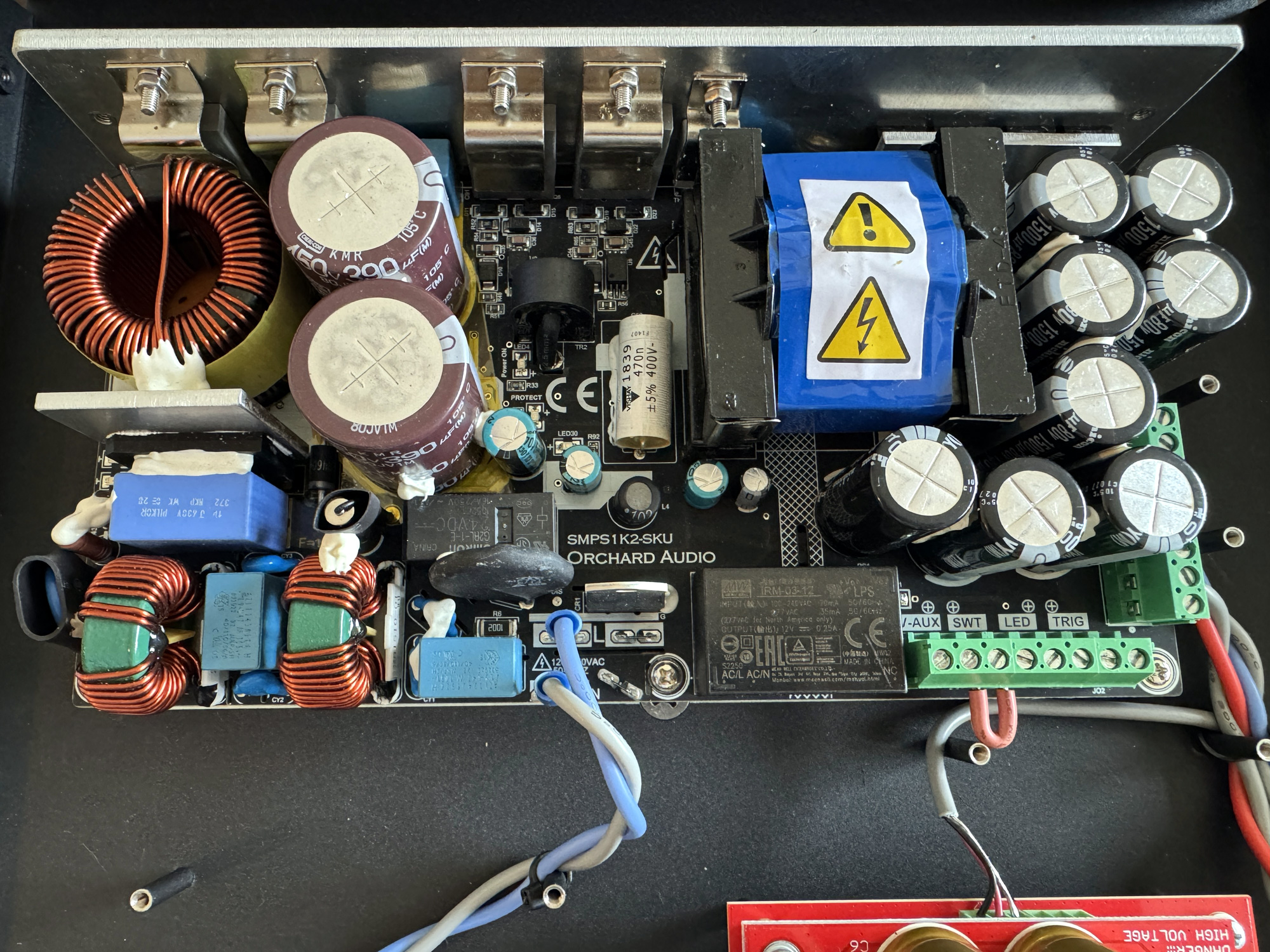
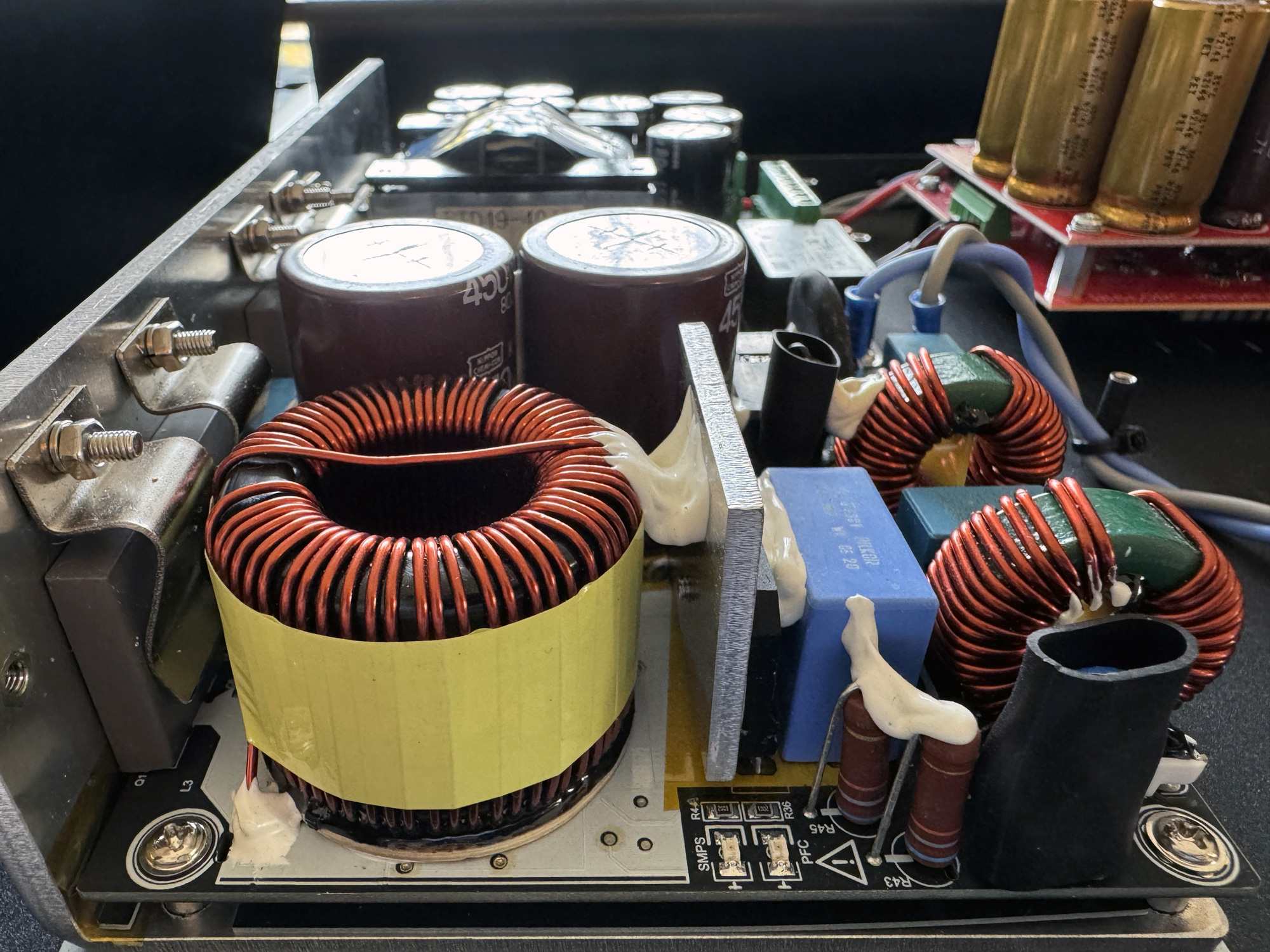
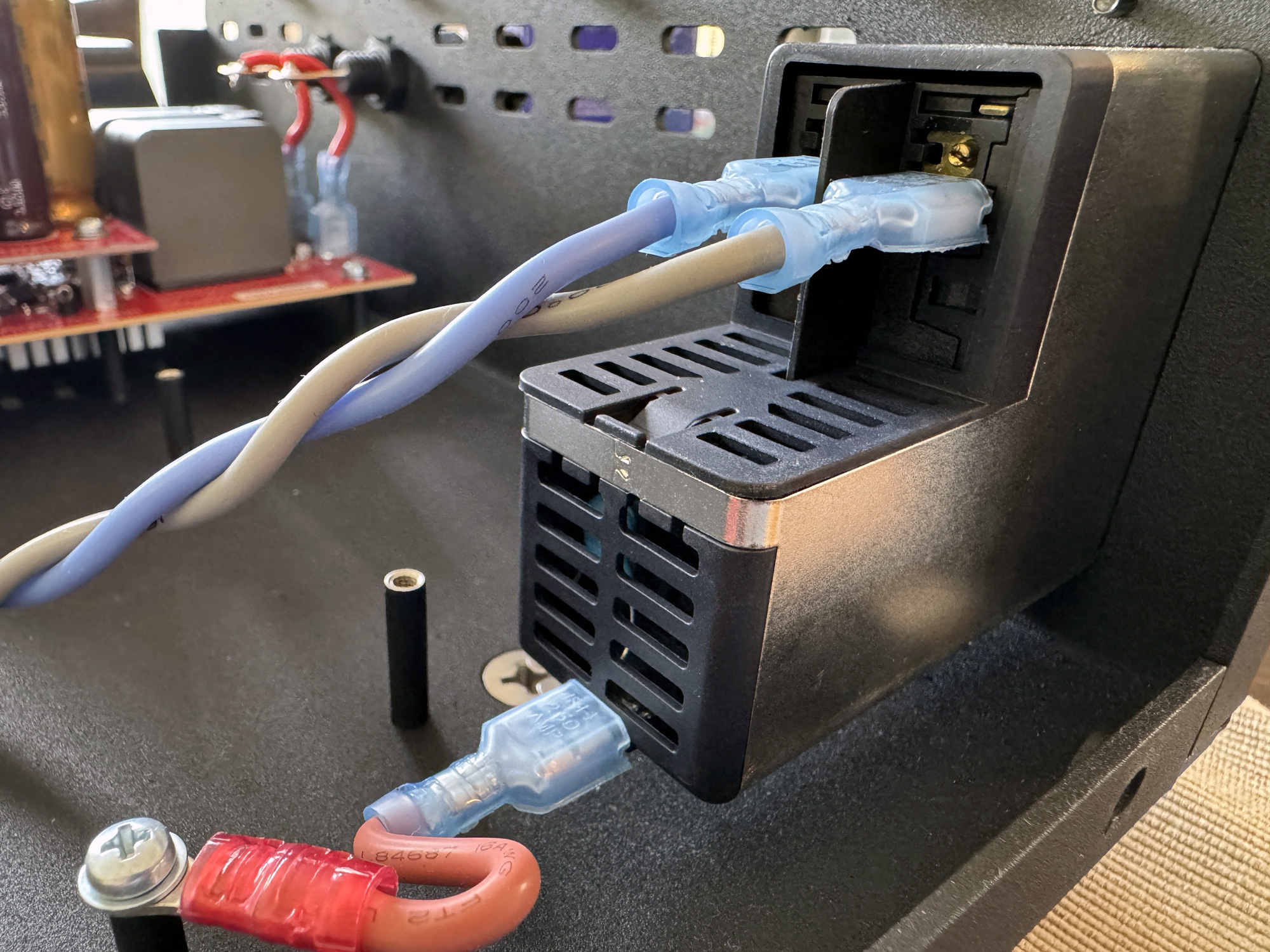
If you have any memory whatsoever of the Benchmark AHB2 amps, what stood out to you with those, vs. what stands out to you with the Orchard?
Hello, Michael,
Thank you for your question and your readership.
I liked the Benchmark Media AHB2. When I reviewed it last year, it struck me as a very musical design, albeit in class AB.
Contrasting the Orchard Audio Starkrimson Mono Ultra Premium, the AHB2 sounded slightly less sophisticated and fresh when driving the Sound Lab M945PX, is priced considerably higher at 7,000USD the pair versus the GaNFET amp’s 5,000USD, and similar to the SMUP, didn’t induce the same dynamics, tonal density and drive as solid-state behmemoths like the $45k Pass Labs XA200.8 and the $30k Bricasti Design M28.
I imagine the results of using either the AHB2 or the SMUP can be very different with higher efficiency speakers, although the intrinsic resolution of the Orchard Audio is undeniable and will be even more pronounced.